#Our Nature
Text
Sound reveals giant blue whales dance with the wind to find food
https://sciencespies.com/environment/sound-reveals-giant-blue-whales-dance-with-the-wind-to-find-food/
Sound reveals giant blue whales dance with the wind to find food
A study by MBARI researchers and their collaborators published today in Ecology Letters sheds new light on the movements of mysterious, endangered blue whales. The research team used a directional hydrophone on MBARI’s underwater observatory, integrated with other advanced technologies, to listen for the booming vocalizations of blue whales. They used these sounds to track the movements of blue whales and learned that these ocean giants respond to changes in the wind.
Along California’s Central Coast, spring and summer bring coastal upwelling. From March through July, seasonal winds push the top layer of water out to sea, allowing the cold water below to rise to the surface. The cooler, nutrient-rich water fuels blooms of tiny phytoplankton, jumpstarting the food web in Monterey Bay, from small shrimp-like krill all the way to giant whales. When the winds create an upwelling event, blue whales seek out the plumes of cooler water, where krill are most abundant. When upwelling stops, the whales move offshore into habitat that is transected by shipping lanes.
“This research and its underlying technologies are opening new windows into the complex, and beautiful, ecology of these endangered whales,” said John Ryan, a biological oceanographer at MBARI and lead author of this study. “These findings demonstrate a new resource for managers seeking ways to better protect blue whales and other species.”
The directional hydrophone is a specialized underwater microphone that records sounds and identifies the direction from which they originate. To use this technology to study blue whale movements, researchers needed to confirm that the hydrophone reliably tracked whales. This meant matching the acoustic bearings to a calling whale that was being tracked by GPS. With confidence in the acoustic methods established, the research team examined two years of acoustic tracking of the regional blue whale population.
This study built upon previous research led by MBARI Senior Scientist Kelly Benoit-Bird, which revealed that swarms of forage species — anchovies and krill — reacted to coastal upwelling. This time, researchers combined satellite and mooring data of upwelling conditions and echosounder data on krill aggregations with the acoustic tracks of foraging blue whales logged by the directional hydrophone.
“Previous work by the MBARI team found that when coastal upwelling was strongest, anchovies and krill formed dense swarms within upwelling plumes. Now, we’ve learned that blue whales track these dynamic plumes, where abundant food resources are available,” explained Ryan.
advertisement
Blue whales recognize when the wind is changing their habitat and identify places where upwelling aggregates their essential food — krill. For a massive animal weighing up to 150 tonnes (165 tons), finding these dense aggregations is a matter of survival.
While scientists have long recognized that blue whales seasonally occupy Monterey Bay during the upwelling season, this research has revealed that the whales closely track the upwelling process on a very fine scale of both space (kilometers) and time (days to weeks).
“Tracking many individual wild animals simultaneously is challenging in any ecosystem. This is especially difficult in the open ocean, which is often opaque to us as human observers,” said William Oestreich, previously a graduate student at Stanford University’s Hopkins Marine Station and now a postdoctoral fellow at MBARI. “Integration of technologies to measure these whales’ sounds enabled this important discovery about how groups of predators find food in a dynamic ocean. We’re excited about the future discoveries we can make by eavesdropping on blue whales and other noisy ocean animals.”
Background
Blue whales (Balaenoptera musculus) are the largest animals on Earth, but despite their large size, scientists still have many unanswered questions about their biology and ecology. These gentle giants seasonally gather in the Monterey Bay region to feed on small shrimp-like crustaceans called krill.
advertisement
Blue whales are elusive animals. They can travel large distances underwater very quickly, making them challenging to track. MBARI researchers and collaborators employed a novel technique for tracking blue whales — sound.
MBARI’s MARS (Monterey Accelerated Research System) observatory offers a platform for studying the ocean in new ways. Funded by the National Science Foundation, the cabled observatory provides continuous power and data connectivity to support a variety of instruments for scientific experiments.
In 2015, MBARI researchers installed a hydrophone, or underwater microphone, on the observatory. The trove of acoustic data from the hydrophone has provided important insights into the ocean soundscape, from the migratory and feeding behaviors of blue whales to the impact of noise from human activities.
In 2019, MBARI and the Naval Postgraduate School installed a second hydrophone on the observatory. The directional hydrophone gives the direction from which a sound originated. This information can reveal spatial patterns for sounds underwater, identifying where sounds came from. By tracking the blue whales’ B call — the most powerful and prevalent vocalization among the regional blue whale population — researchers could follow the movements of individual whales as they foraged within the region.
Researchers compared the directional hydrophone’s recordings to data logged by tags that scientists from Stanford University had previously deployed on blue whales. Validating this new acoustic tracking method opens new opportunities for simultaneously logging the movements of multiple whales. It may also enable animal-borne tag research by helping researchers find whales to tag. “The integrated suite of technologies demonstrated in this paper represents a transformative tool kit for interdisciplinary research and mesoscale ecosystem monitoring that can be deployed at scale throughout protected marine habitats. This is a game changer and brings both cetacean biology and biological oceanography to the next level,” said Jeremy Goldbogen, an associate professor at Stanford University’s Hopkins Marine Station and a coauthor of the study.
This new methodology has implications not only for understanding how whales interact with their environment and one another but also for advancing management and conservation.
Despite protections, blue whales remain endangered, primarily from the risk of collisions with ships. This study showed that blue whales in Monterey Bay National Marine Sanctuary regularly occupy habitat transected by shipping lanes. Acoustic tracking of whales may provide real-time information for resource managers to mitigate risk, for example, through vessel speed reduction or rerouting during critical periods. “These kinds of integrated tools could allow us to spatially and temporally monitor, and eventually even predict, ephemeral biological hotspots. This promises to be a watershed advancement in the adaptive management of risks for protected and endangered species,” said Brandon Southall, president and senior scientist for Southall Environmental Associates Inc. and a coauthor of the research study.
Support for this research was provided by the David and Lucile Packard Foundation. The National Science Foundation funded the installation and maintenance of the MARS cabled observatory through awards 0739828 and 1114794. Directional acoustic processing work was supported by the Office of Naval Research, Code 32. Tag work was funded in part by the National Science Foundation (IOS-1656676), the Office of Naval Research (N000141612477), and a Terman Fellowship from Stanford University.
#Environment
#10-2022 Science News#2022 Science News#acts of science#Earth Environment#earth science#Environment and Nature#everyday items#Nature Science#New#News Science Spies#October 2022 Science News#Our Nature#planetary science#production line#sci_evergreen1#Science#Science Channel#science documentary#Science News#Science Spies#Science Spies News#Space Physics & Nature#Space Science#Environment
36 notes
·
View notes
Note
Good Morning Prince. How does the whole prince thing work when you're away from court with sad boi? And what did sad boi do to get you away from a place as cool as a vampire court????
Good morning dear. Sorry for taking so long to reply, but your ask came at a very appropriate time: I just got back from a visit to court.
So when we set up the court I suppose I thought I'd live there full time. But even a rockstar can't be on stage 24/7, and, I imagine like many kings and queens have, I found the environment stifling.
Look, I've always wanted to be a hero, I've always wanted to be seen and loved and wanted, guilty as charged, but I've never been good at dealing with pomp and circumstance and ritual and the Court seemed to positively BREED that sort of thing. Maybe vampires are pompous by nature. Maybe too many of them were born in a world of royalty and divine right. But I'm a creature of chaos, as Louis will be glad to tell you. The brat prince, remember? I've never been good at falling in line. I'm also a child of the enlightenment; I was no fan of the revolution when it happened (it did kill most of my family...) but I've always been a little skeptical of titles, despite being born with one. Or maybe because of it. Our title didn't keep us warm during the winter, it just made it impossible to ask for the help of our neighbors because as aristocrats we were above such weakness.
Maybe we shouldn't have structured it in such a regal fashion, but it was a busy time. I was trying to figure out how to put out Roshamendes' fires (quite literally) , and then they wanted me to be leader and then they were calling me prince. Not sure how it all escalated that quickly either. Better than a new religion, which seems to be the OTHER thing vampires like to do.
Anyway, court was uncomfortable, at least to be at full time, and I longed for a backstage area. Louis and I were also repairing our relationship, trying again, and while Louis loves the court in theory and what it stands for, he finds it overwhelming. When I held the core we didn't have much choice in the matter, I had to be protected, and my understandably paranoid subjects insisted I be somwhere safe and accessible, for THEIR safety. But after it's removal and our serverencr from the core, there was no reason to keep me in my gilded cage, so an idea was reached. Louis and I would live our private lives in whatever city we chose, and would both be in attendance a few days out of the month to run business. I usually average about a week out of the month, sometimes less or more if things ar happening. We also have a Season now, a month or so when court is officially opened, we have a series of balls and parties, announcements are made, major business is attended to, and all vampire kind is invited to attend. THAT'S when I'm most busy, and tend to live there full time while the court is teeming with people, both for business and pleasure. I don't mind it so much! The show must go on, and most of this prince stuff is being a pretty figurehead that people can identify with.
Honestly, I'm a pretty hands off ruler. Could never stand being told what to do, don't really like to tell others, but I'm happy to step in to settle disputes and mediate. That I can do. Sometimes big things come up and require my presence, like the vampire Nazi incident that brought Louis and me to Thessaloniki, then Rome, then England, then back to Thessaloniki (more for a vacation...) slightly before the pandemic.
Anyway, other than that, I live privately with Louis in New York, and very happily. I like being the vampire prince, don't get me wrong, love the attention and the adoration, and yes, the ability to do something for my people and my kind that helps them cope with eternity, and gives them the pride in their culture and nature that so many of us lacked for so long.
I hope my service there somehow makes up for what I did to Louis and Claudia. All this started because I separated two vampires from their community, and what is Louis' story, immortalized in his book, but a search for community? I hope I have finally brought him that.
2 notes
·
View notes
Text
We just saw a moon halo!! :D
#meteorology#i guess#it was really beautiful and impossible to capture for my crappy camera#it got really cold and the moon is very bright#apparently its a 22° halo and it happens because of little crystals of ice in some layers of atmosphere#man i love meteorologic phenomenons so. much!!#i feel like i could ramble about them for hours#if i knew something about them that is#man just even the regular ass clouds are so beautiful and diverse#and there are so many rare types that only happen in some ridiculous circumstances#and its just so#just the weather#our nature#our atmosphere#the fact itself that it can be so stunningly pretty at times#its so cool
4 notes
·
View notes
Text
Oh My Nature
I see your tornadic & flooding power
Oh my nature
We know of weaknesses in melting glaciers
Oh my nature
Sorry for our behavior
Oh Mother Nature
Don’t understand our daily vices
Oh my nature
Are destroying you
Oh Mother Nature
Reefs depleting grains of sands mixed in colorful plastic
Oh my nature
Sorry for our human behavior
Oh Mother Nature
We’re told again again year after year
Oh our nature
Our human insurance of ignorance makes us disregard all of your powers we tell ourselves someone else will figure it out when that time is needed & we don’t bandage or repair your weaknesses, can we be helped, we build the same way to watch it get soaked in or blown into the sky, our funny super egos & bank accounts
Ohhhhh Mother Nature
Sorry for our ways
Oh my nature
All our natures
Mother Nature needs nurtured
#wordsbymm#writing#words#thoughts#vent#write#written#theantipoetrysociety#mother nature#my nature#our nature#ignoranza#ignorant#fighting back#we need peace#we need for all beings#Peace#repair the Earth#onesw/$neededplease#tweets don’t help Earth
2 notes
·
View notes
Text
sometimes. i just have to remind myself that percy took annabeth to paris. like, canonically. he forgot their one-month anniversary. and took his girl to paris to make up for it. the standards are in elysium.
#because listen#hijack a quest and crossed the country to save her#burned himself alive to save her#returned from literal paradise because he didn't want to be away from her#turn down literal fucking godhood to live out his natural life with her#but this??#this is the moment annabeth knew she scored#annabeth 'my man forgot our one-month anniversary and took me to paris to apologize' chase#percy jackon and the olympians#pjo text post#pjo#percy jackson#annabeth chase#percabeth#percabeth fluff#percabeth being the cutest couple to ever not exist#percy is devoted to this girl#she has him wrapped around her finger#and she knows it
5K notes
·
View notes
Text




this post & merthur
#sami rambles#our favourite doomed couple <333#i will always and forever remember hearing sara bareilles' orpheus for the first time as a teenager and immediately and irrevocably#linking it to merthur for the rest of my natural life so much so that i can no longer separate the two#LOL :D#merlin#bbc merlin#arthur pendragon#merlin x arthur#merthur#web weave#orpheus and eurydice
4K notes
·
View notes
Text

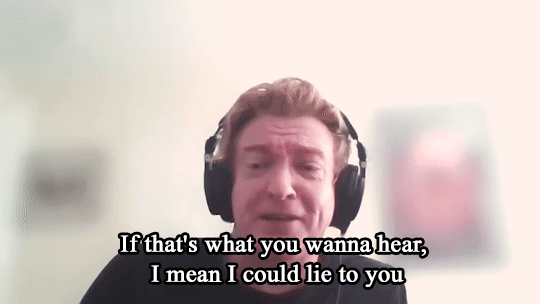


If you haven't done so already go watch this Rhys Darby interview by The Movie Dweeb. It's 48 minutes long, it's funny and natural and just great ♥
#of course he's a good kisser fuckkk#yes drag him rhys#the movie dweeb#rhys darby#its so natural#big props to him#ofmd#our flag means death#taika waititi#rhys darby interview#ofmdann edits
4K notes
·
View notes
Text

#LISTEN#I THINK WE ALL WOULD IGNORE OUR BEST FRIEND IF THEY WERE TIED UP AND BEING HELD BY THAT PROFESSOR GUY WE HIRED#ITS ONLY NATURAL#puppet history#watcher#shane madej#ryan bergara#we are watcher#watcher entertainment#the professor
16K notes
·
View notes
Text
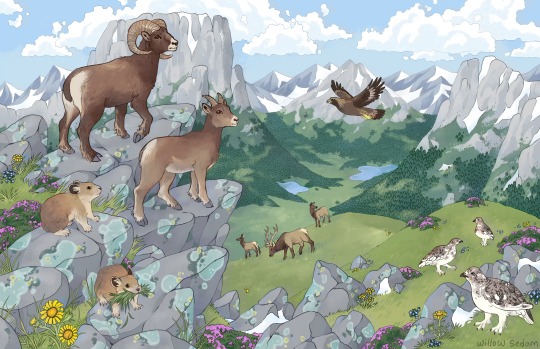


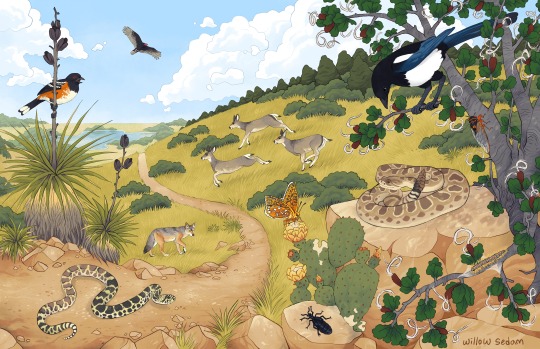

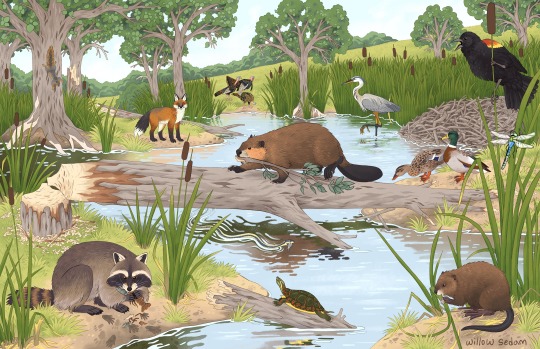
something a little different to finish up 2023. these are some ecosystem illustrations i did for my summer job in environmental education this year, featuring local communities of plants and animals. it was a real challenge and very out of my comfort zone, but a super great project to work on, and i'm happy with how they turned out - and that they'll be used in programming for hopefully a very long time to come!
#my art#art#digital art#illustration#wildlife illustration#nature illustration#here's to more getting out of our comfort zone in 2024!
2K notes
·
View notes
Text
Obsessed with the idea that people forget you have Captain Levi’s heart until they see him do little things for you. Like at breakfast, before his morning meeting with Erwin, he’ll pass by your table and casually hand you a loaded plate. “They didn’t have those croissants you usually like but I found those weird ass pastries you can’t stop talking about.” And then he’ll just walk away without saying anything else. Or like, while you’re all suiting up for a mission, he’ll randomly walk up to you and adjust the thigh straps of your odm gear to make sure they’re properly secured and you’re just like “!!!” inside. Or like for every group meeting he arrives early and saves you the seat next to him and when you arrive, he’ll pull out your chair, waiting till you sit so he can briefly place his hand on your thigh as a greeting 🥰🥰🥰🥰
#OBSESSED#like it would be completely normal and second nature to him#he wouldn’t even realize until someone pointed it out and he would be like 🙄🙄🙄#our acts of service BABE I’m just so 😭😭😭#aot levi#levi Ackerman#levi attack on titan#levi hcs#levi headcanons#levi#levi x reader#levi x you#levi ackerman x reader#levi x y/n#levi ackerman x you#levi fluff#manda writes
5K notes
·
View notes
Photo


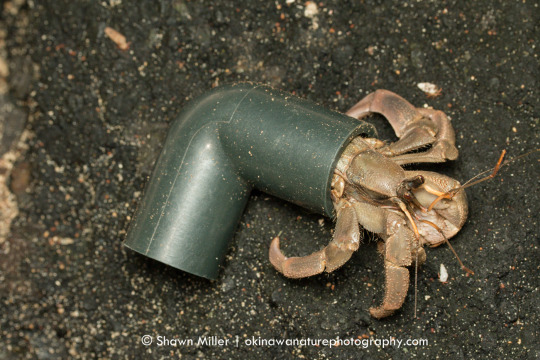


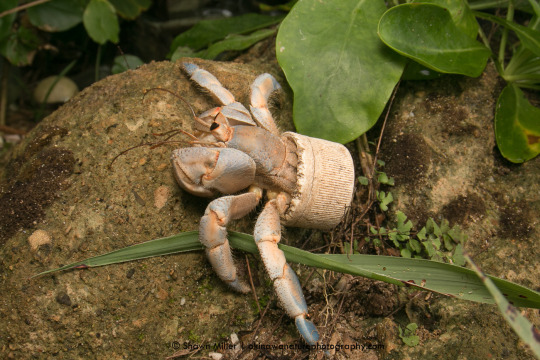

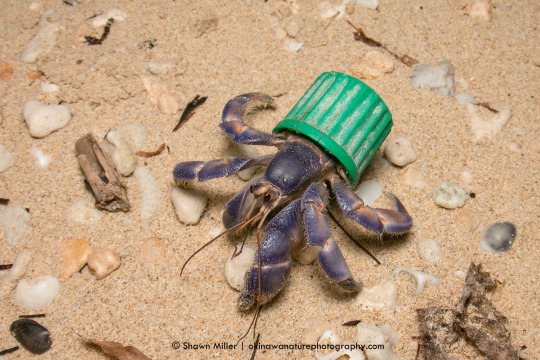

(May 12, 2023) We are raising money for a crowd funded research project investigating the cause of blueberry hermit crabs in Okinawa, Japan using trash found on the beach as “homes” instead of natural shells. These hermit crabs are endemic to the southern islands of Japan, and they act as coastal environmental engineers. They are endangered on several islands, and we want to try and understand why they are resorting to beach trash for shells. Please consider sharing this post and donating to the project. The fundraising will be active for the next 45 days (until June 26).
You can find all project details here: https://experiment.com/projects/blueberry-hermit-crabs-with-beach-trash-homes
We suspect that areas with high rates of tourism lead to beach combers collecting natural shells leaving nothing for the hermit crabs to use. It’s possible that overfishing of turbo snails which would naturally provide shells for the crabs may also be a factor. We will survey many sites across several islands in Okinawa to try and determine a cause of this behavior.
We will be working closely with national geographic photographer Shawn Miller (photo credits above) and several researchers in Japan. Additionally, we will complete extensive beach clean ups in the areas we study. Thank you so much for reading!
#conservation#hermit crabs#ecology#biology#research#beach combers#plastic waste#save our shells#make the switch for nature#national geographic#shawn miller#beach trash#beach clean ups#blueberry hermit crab#science experiments#marine science#marine biology#activism#nature#beach#travel#environment
7K notes
·
View notes
Text
Fossil Find Tantalizes Loch Ness Monster Fans
https://sciencespies.com/news/fossil-find-tantalizes-loch-ness-monster-fans/
Fossil Find Tantalizes Loch Ness Monster Fans
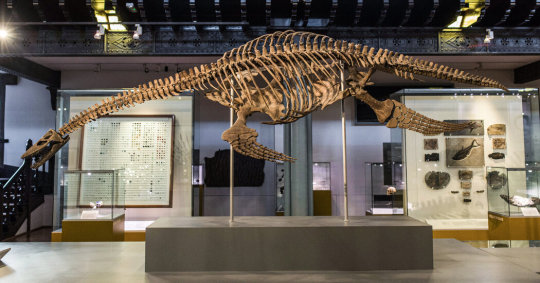
Plesiosaurs went extinct 66 million years ago, but evidence that the long-necked reptiles lived in freshwater, not just oceans, has offered hope to Nessie enthusiasts.
LONDON — Millions of years before the first (alleged) sighting of the Loch Ness monster, populations of giant reptiles swam through Jurassic seas in areas that are now Britain. Known as plesiosaurs, these long-necked creatures were thought to have dwelled exclusively in oceans.
But a discovery published in a paper last week by researchers in Britain and Morocco added weight to a hypothesis that some Loch Ness monster enthusiasts have long clung to: that plesiosaurs lived not just in seas, but in freshwater, too. That could mean, they reasoned excitedly, that Nessie, who is sometimes described as looking a lot like a plesiosaur, really could live in Loch Ness, a freshwater lake.
Local papers have celebrated the finding. It “gives further credit to the idea that Nessie may have been able to survive and even thrive in Loch Ness,” said an article on page 32 of the Inverness Courrier, a biweekly newspaper in the Scottish Highlands. “Loch Ness Monster bombshell,” blared a headline from Britain’s Daily Express tabloid. “Existence of Loch Ness Monster is ‘plausible’” read headlines in The Scotsman, The Telegraph and elsewhere, seizing on a phrase in the University of Bath’s announcement of the study’s findings.
This is not the first study to find that plesiosaurs lived in freshwater. “This new study is simply providing additional evidence for certain members of this group living in freshwater,” said Dean Lomax, a paleontologist and visiting scientist at the University of Manchester. “We’ve always known this.”
But Nick Longrich, the lead author of the study, said his team had one of the stronger cases for it because they found fossils of 12 plesiosaurs, proof that it was not just one plesiosaur that wandered into freshwater and then died there.
“The more plesiosaur fossils discovered in freshwater environments, the more this will further build the picture to explain why plesiosaurs might be turning up in freshwater environments around the world,” said Georgina Bunker, a student who was a co-author of the paper.
Dr. Longrich, a paleontologist and evolutionary biologist at the University of Bath, said it was “completely unexpected” to find the fossil of a plesiosaur that had lived in an 100-million-year-old freshwater river system that is now the Sahara.
While on a research trip to Morocco, he was sifting through a box in the back room of a shop when he spotted a “kind of chunky” bone, which turned out to be the arm of a five-foot long baby plesiosaur. Dr. Longrich paid the cashier no more than 200 Moroccan Dirham, or about $20, after bargaining to bring down the price, and brought the fossils back to Britain for further study.
Nick Longrich/University of Bath
“Once we started looking, the plesiosaur started turning up everywhere,” he said. “It reminds you there’s a lot we don’t know.” (The fossils will be returned to museums in Morocco at a later date, he said.)
As the news of the study made headlines last week, some Nessie fans were hopeful. George Edwards, who was for years the skipper of a Loch Ness tourism boat called the Nessie Hunter, said that for him the new study showed how creatures could adapt to survive in new environments — and that the world is full of mysteries. Take the coelacanth, a bony fish that was thought to have become extinct millions of years ago but was found in 1938 by a South African museum curator on a fishing trawler. “Lo and behold, they found them, alive and kicking,” Mr. Edwards said. “Anything is possible.”
Mr. Edwards said he had seen unexplained creatures in Loch Ness plenty of times: “There’s got to be a family of them.” From what he has seen, the creatures have a big arched back, no fins and are somewhat reminiscent of a plesiosaur.
But there is one detail that some Nessie lovers may have overlooked in their embrace of the plausibility of Nessie’s existence: Plesiosaurs became extinct at the same time as dinosaurs did, some 66 million of years ago. Loch Ness was only formed about 10,000 years ago, and before that it was ice.
Valentin Fischer, an associate professor of paleontology at the University of Liège in Belgium, said that it would currently be impossible for a marine reptile like the plesiosaur to live in Loch Ness.
Nick Longrich/University of Bath
The first recorded sighting of Nessie dates back to the sixth century A.D., when the Irish monk St. Columba was said to have driven a creature into the water. But global interest was revived in the 20th century, after a British surgeon, Col. Robert Wilson, took what became the most famous photo of the Loch Ness monster in 1934. Sixty years later, the photograph was revealed to be a hoax.
But some people were not discouraged, and, ever since, throngs of tourists have traveled to Loch Ness each year in hopes of seeing the monster.
There have been more than 1,100 sightings at Loch Ness, including four this year, according to the register of official sightings.
A famous photograph of the Loch Ness Monster taken in 1934 was later revealed to have been a hoax.Keystone/Getty Images
Steve Feltham, a full-time monster hunter who has lived on the shores of Loch Ness for three decades, said the British-Moroccan study was interesting, but that it was irrelevant to his search. Ever since it became clear that the famous 1934 photo of Nessie was fake, he has stopped believing that Nessie was a plesiosaur. Plesiosaurs have to come up for air, so he figures he would have seen it during the 12 hours a day that he scans the loch. Instead, he scans the water for giant fish that look like a boat turned upside down.
“I struggle to think of any bona fide Nessie hunter that still believes in the plesiosaur,” he said. “The hunt has moved on from that.”
#News
#2022 Science News#8-2022 Science News#acts of science#August 2022 Science News#Earth Environment#earth science#Environment and Nature#everyday items#Nature Science#New#News Science Spies#Our Nature#planetary science#production line#sci_evergreen1#Science#Science Channel#science documentary#Science News#Science Spies#Science Spies News#Space Physics & Nature#Space Science#News
38 notes
·
View notes
Text
So I did it
Me: *calling Marius about an hour before sunrise for him*
Marius: Lestat! Are you all right? Where are you? What have you done?
Me: Marius, what is a man?
Marius: (pause. He puts on his Strict Daddy Voice) Lestat, you call me at this time to ask me what a man is? If you, of all people, don't know by now....
Me: (can he hear the shit eating grin through the phone?) I just want your opinion, Maestro. Philosophically.
Marius: (he now puts on his Keeper and Teacher of All Knowledge Both Human And Vampiric voice) Plato would say a featherless biped, but that only prompted Diogenes to throw a chicken at him. Lestat, why do I feel like you're about to throw a chicken at me no matter what I say?
Me: What?
Marius: (remembering I am an idiot when it comes to history, presumably, sighs. ) I assume a man is an adult human being fully capable of taking part in society, and playing his role in government.
Me: So...to be a man is to be ...a voter?
Marius: I suppose, to put it mind-boggingly simply, yes.
Me: So a woman who votes is a man?
Marius: And there's the chicken. Obviously not, a woman could never be a man.
Me: so what is it to be a man as distinct from being a woman?
Marius: A Man is ...politically....civically...different?
Me: how so?
Marius: (exasperated now) I don't know, Lestat, ask the Internet you're so fond of. I'm sure they know what a man is. Although with the way some of these men dress sometimes I'm not so sure....
There you have it. This has been Frosty Takes With An Old White Guy.
5 notes
·
View notes
Text
You don't need to believe that people as a whole are good or well-intentioned to be an optimist about fixing climate change.
A lot of the time, it's enough to trust in this: people hate being screwed over. And even more than that, they hate feeling screwed over.
Climate change is actively screwing over almost every single person on this planet, whether they know it or not. We just need to keep making sure that people do know that they're getting screwed over, along with all their loved ones, and who's doing it.
Spite and righteous anger will honestly do a lot of the rest.
#hope#good news#hope posting#climate change#climate optimism#life#not news#advice#me#human nature#like. obviously this is imho. but also I'm genuinely convinced that I'm right#spite and anger are powerful motivators#there are scientists who argue that anger's whole evolutionary purpose#is to keep us from being screwed over#because that's so vital to our survival#and what's more vital to our survival than a liveable planet???#channel your anger into action#do not let anyone tell you that optimism or being an activist or being part of a healthy community means never being angry#that is so so untrue#and if you find a way to channel your anger and pain and grief to do GOOD in the world#to help people#then that will also do a lot to stop your emotions from eating you up inside#hopepunk#anger#spite#optimism#hopeposting#humanity
1K notes
·
View notes
Text

on his way to win Ed's heart back!
#hansoeii returns with yet another devastating steard fanart#he wants supposed to get a beard at first but it's second nature for me to draw him with one at this point#anyways enjoy#ofmd#ofmd fanart#our flag means death#our flag means death fanart#stede bonnet#stede bonnet fanart#Rhys Darby#my art#fanart
7K notes
·
View notes
Text

follow this path . . . | uwhe-arts
#follow this path#forest paths#photographers on tumblr#winter vibes#enchanting forest#the nature is our home#landscape#original photographers#uwhe-arts#nature#original creators#vertical#explore#uwhearts#photography#hiking#alleys#occurs
1K notes
·
View notes